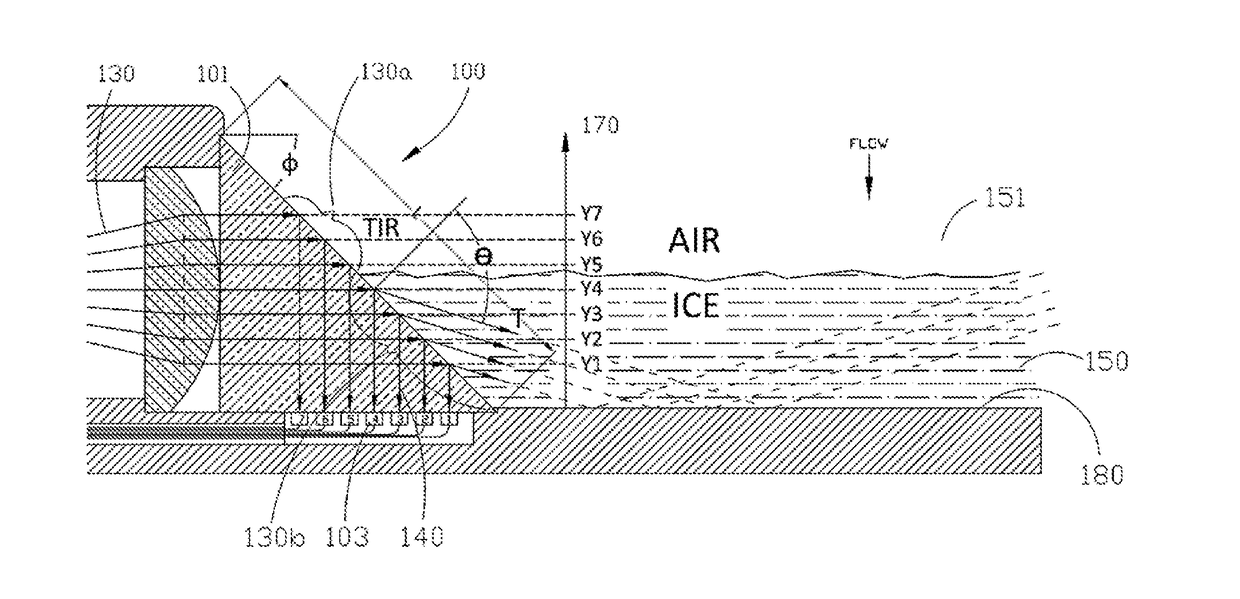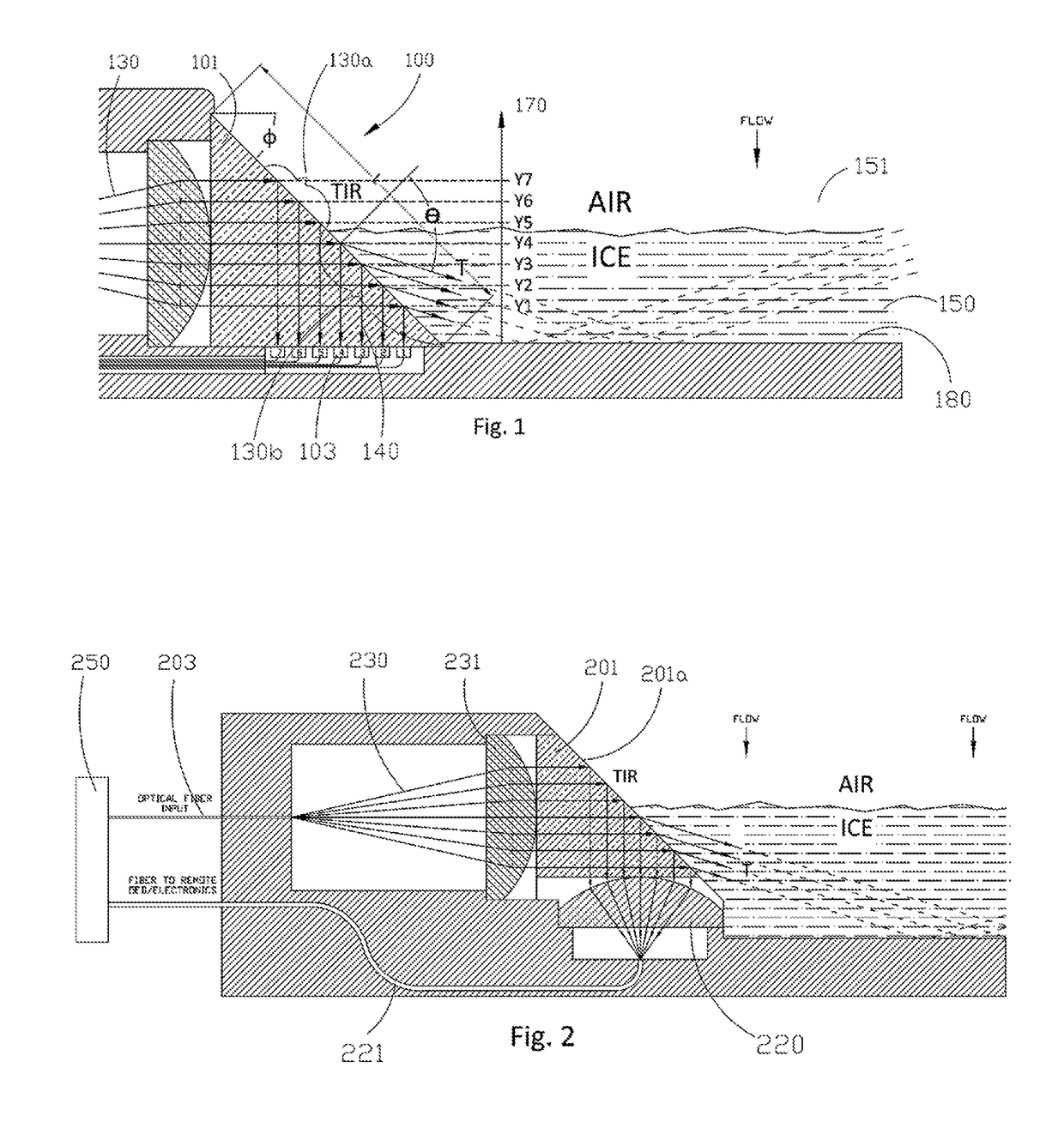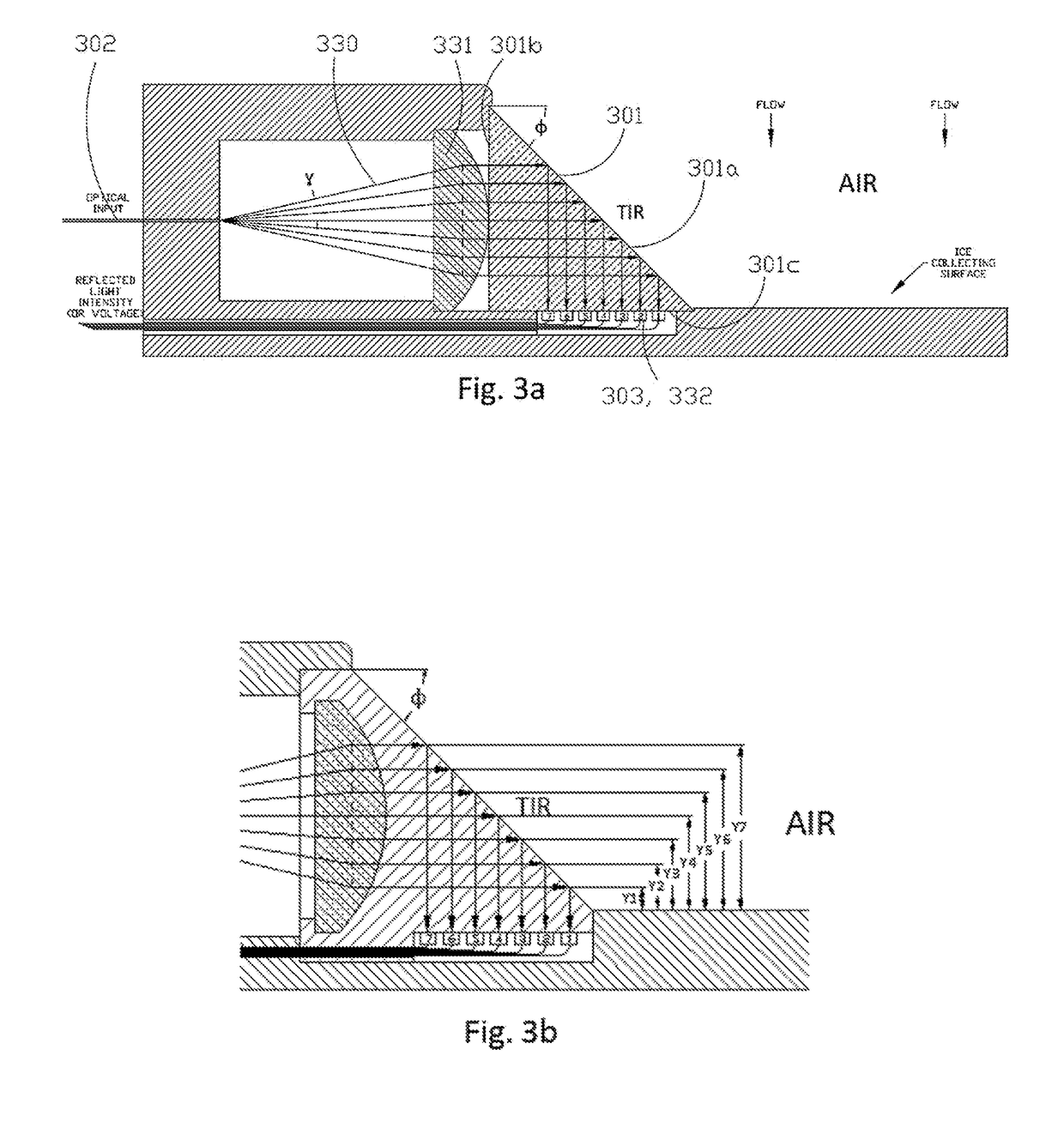Optical sensor for detecting accumulation of a material
a technology of optical sensors and accumulations, applied in the field of optical sensors, can solve the problems of increasing drag, reducing lift and drag, and requiring continuous maintenance, and affecting the detection accuracy of material levels
- Summary
- Abstract
- Description
- Claims
- Application Information
AI Technical Summary
Benefits of technology
Problems solved by technology
Method used
Image
Examples
Embodiment Construction
[0024]Referring to FIG. 1, a sensor 100 of the present invention is shown. The sensor 100 is configured for detecting the level of accumulation of a material 150 along an axis 170 in a fluid environment 151. (As used herein, a fluid environment is the environment in which the material accumulates. The fluid(s) of the fluid environment may be gaseous (e.g., air) or liquid (e.g., water), and is (are) displaced by the accumulation of the material.) The material 150 has a first refractive index and the fluid has a second refractive index different from the first refractive index. The sensor comprises an optically transparent body 101 having a third refractive index and at least one exposed surface 101a defining a length l. One of the first or second refractive indexes is lower than the third refractive index. The exposed surface 101a is configured to be exposed to the environment 151 and positioned with the length l extending along the axis 170. The sensor 100 also comprises at least on...
PUM
| Property | Measurement | Unit |
|---|---|---|
| angle | aaaaa | aaaaa |
| altitudes | aaaaa | aaaaa |
| critical angle | aaaaa | aaaaa |
Abstract
Description
Claims
Application Information
 Login to View More
Login to View More - R&D
- Intellectual Property
- Life Sciences
- Materials
- Tech Scout
- Unparalleled Data Quality
- Higher Quality Content
- 60% Fewer Hallucinations
Browse by: Latest US Patents, China's latest patents, Technical Efficacy Thesaurus, Application Domain, Technology Topic, Popular Technical Reports.
© 2025 PatSnap. All rights reserved.Legal|Privacy policy|Modern Slavery Act Transparency Statement|Sitemap|About US| Contact US: help@patsnap.com



